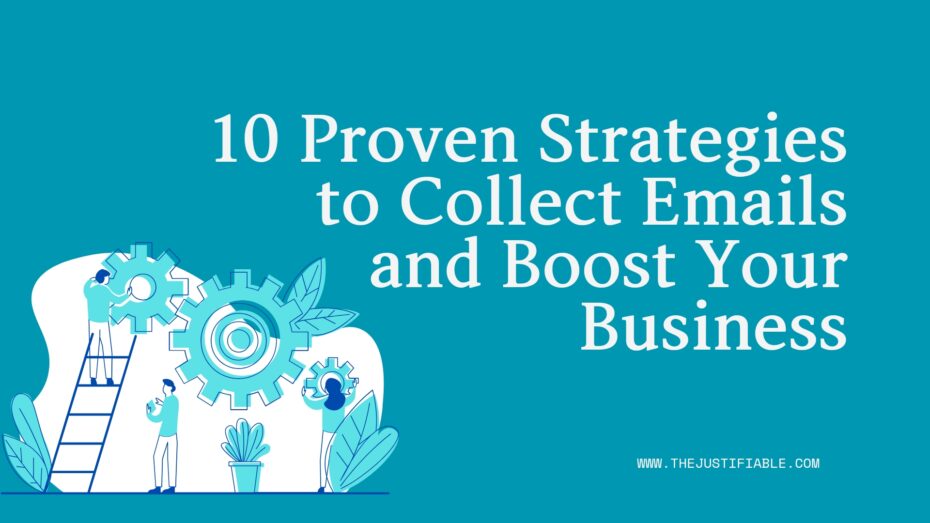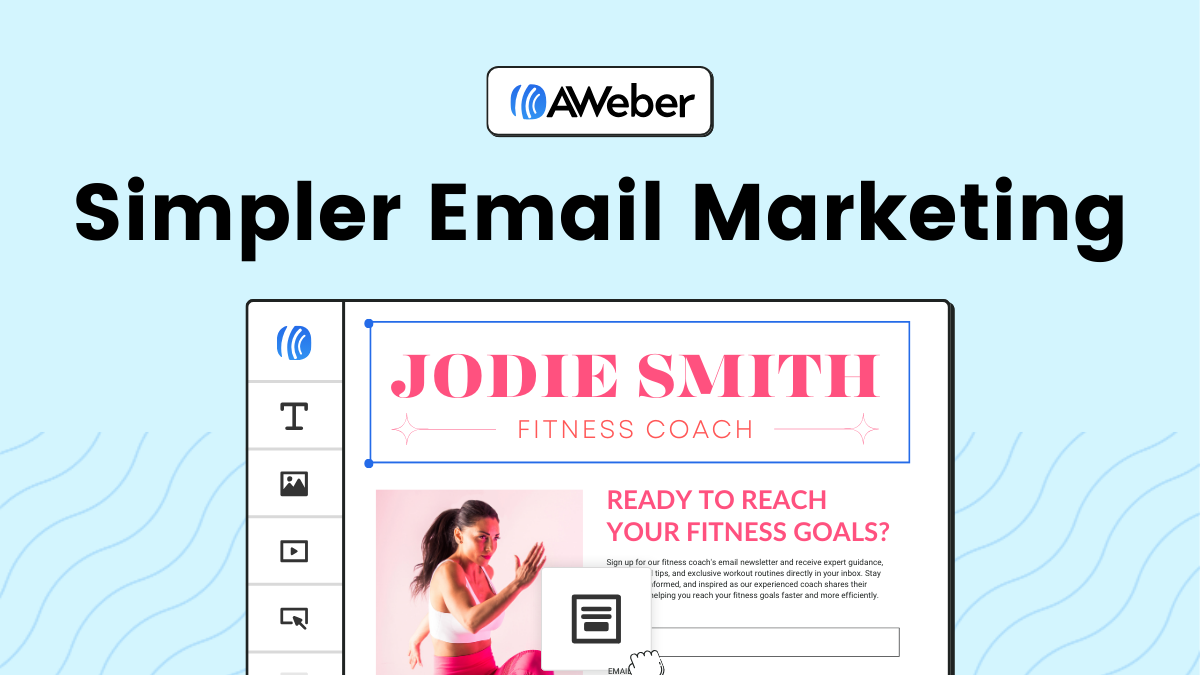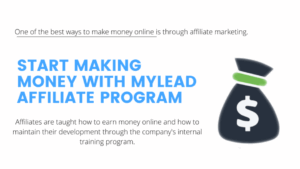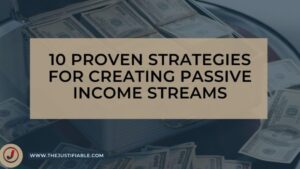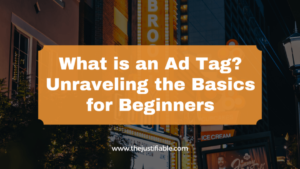Table of Contents
“Collect emails to amplify your business’s reach and success.” This mantra has become a cornerstone in the digital marketing world, and for good reason. In an era where direct communication with your audience can make or break a business, the art of collecting emails has transformed from a mere tactic to an essential strategy.
For many businesses, the email list is not just a collection of addresses; it’s a goldmine of potential customers, a community eagerly waiting to hear from you, and a direct line to those who matter most to your business. But how do you build this list? More importantly, how do you do it in a way that adds value to your audience while also driving your business objectives?
In this comprehensive guide, we delve into the heart of effective email marketing strategies. We understand that your goal is not just to collect emails haphazardly but to cultivate a list that represents a genuine, engaged audience. This is not about bombarding unsuspecting internet users with unsolicited emails. It’s about creating a mutual exchange of value, where every email address is a bridge between your business and a potential lifelong customer.
So, let’s dive in and explore these 10 proven strategies to collect emails and boost your business, transforming your email list from a marketing tool into a thriving community of engaged customers.
Understanding the Basics of Email Collection
In the realm of digital marketing, understanding the basics of email collection is akin to mastering the art of conversation. It’s about initiating a dialogue with your potential customers, inviting them into your world, and promising them value in exchange for their attention.
This is where the journey begins, and getting it right sets the tone for a mutually beneficial relationship between your business and your audience.
Why Collecting Emails is Essential for Your Business
Imagine a world where you have direct access to people who are not just interested in what you offer, but are also eager to hear from you. That’s the power of a well-curated email list. Collecting emails is not just about growing numbers; it’s about nurturing a community of interested individuals who see value in what you provide.
Each email is a potential lead, and each lead is a potential sale. But it goes beyond sales. It’s about brand advocacy, repeat business, and creating a buzz around your offerings. In a digital landscape crowded with competitors vying for attention, having a direct line to your audience is invaluable. It allows for personalized communication, where you can tailor your message, offers, and updates to meet the specific needs and preferences of your audience.
Moreover, email marketing offers an impressive return on investment (ROI). For every dollar spent, email marketing can provide a return many times over, making it one of the most effective tools in your marketing arsenal. It’s not just about sending emails; it’s about creating a strategic campaign that resonates with your audience, drives engagement, and boosts your business’s bottom line.
The Legal Aspects of Email Collection
As you embark on this journey of email collection, it’s crucial to navigate the legal landscape with care and respect. The last thing you want is to damage your brand’s reputation or face legal repercussions due to non-compliance. This is where understanding the legal aspects of email collection becomes paramount.
Legislation such as the General Data Protection Regulation (GDPR) in the EU and the CAN-SPAM Act in the US set clear guidelines on how businesses should collect, handle, and use personal data, including email addresses. These laws are designed to protect the privacy of individuals and ensure that businesses engage in ethical marketing practices.
Compliance is not just a legal obligation; it’s a commitment to your audience’s trust and privacy. It involves obtaining explicit consent, providing a clear and easy opt-out option, and being transparent about how you intend to use their data. By adhering to these legal requirements, you not only avoid penalties but also demonstrate to your audience that you value and respect their privacy.
Strategy 1: Utilizing Website Pop-Ups to Collect Emails
In the bustling online marketplace, capturing the attention of your visitors is both an art and a science. One of the most effective tools at your disposal is the website pop-up. When used wisely, pop-ups can be a game-changer for your email collection strategy, transforming casual visitors into valuable members of your community.
But how do you ensure that your pop-ups are more than just an annoyance? How do you make them an irresistible invitation to connect further?
Best Practices for Effective Pop-Ups
To turn your website pop-ups from a nuisance into a powerhouse of conversion, you need to follow some best practices. First, timing is everything. Your pop-up should appear at a moment when the visitor is most likely to be receptive. This could be after they’ve spent a certain amount of time on your site or as they’re about to leave. The key is to catch them when they’ve had enough interaction to see the value in what you’re offering but before they leave your site.
Next, focus on the message. Your pop-up should offer something of genuine value. This could be a discount, an exclusive piece of content, or insider access to your community. The offer should be compelling enough to warrant the exchange of an email address. Be clear, concise, and ensure that your message resonates with your target audience.
Finally, consider the design. Your pop-up should be visually appealing and consistent with your brand’s aesthetic. It should stand out without being overwhelming. The user interface should be intuitive, with a clear call-to-action (CTA). Make it as easy as possible for visitors to understand what you’re offering and what they need to do to take advantage.
Examples of Successful Pop-Up Designs
To illustrate the power of well-crafted pop-ups, let’s look at some successful examples. Consider a pop-up that appears just as a visitor is about to leave your site. It offers a 10% discount on their first purchase in exchange for an email. The design is sleek, the message is clear, and the CTA is irresistible. This kind of targeted, value-driven approach can significantly boost your email collection rates.
Another example is a pop-up that offers a free ebook related to your visitor’s interests. It appears after they’ve spent a few minutes reading a relevant article on your site. The ebook provides further valuable information, positioning your brand as a helpful resource. The visitor receives something of value, and you gain a new addition to your email list.
In both cases, the pop-ups don’t just ask for an email; they provide a compelling reason to give it. They enhance the user experience rather than detracting from it. They are designed with the user in mind, from timing and content to design and functionality.
Strategy 2: Offering Incentives for Email Subscriptions
In the vibrant world of email marketing, incentives are the magnetic force that draws in potential subscribers. It’s a simple yet profound truth: offer something valuable, and people are more inclined to give something in return—in this case, their email addresses.
But what kind of incentives resonate with your audience, and how do you promote them effectively? Let’s delve into these pivotal aspects of email subscription strategy.
Ideas for Attractive Incentives
When it comes to incentives, the key is relevance and value. The incentive must align with your audience’s interests and needs while also reflecting the essence of your brand. A great starting point is to offer exclusive content. This could be an informative eBook, a comprehensive guide, or access to exclusive videos that provide insights not available elsewhere. This type of content positions your brand as an authority and builds trust with your audience.
Another potent incentive is special offers or discounts. For instance, providing a discount code upon subscription can be a powerful motivator for those on the verge of making a purchase. It’s a win-win: your customers feel valued and save money, while you increase your sales and grow your email list.
Additionally, running contests or giveaways is a dynamic way to engage and expand your audience. The chance to win something desirable can prompt many to subscribe. Ensure that the prize is desirable and relevant to your brand. For example, if you’re in the fashion industry, a giveaway featuring your latest product line would be compelling.
How to Promote Your Incentives
Promotion is where the magic happens. It’s not enough to have fantastic incentives; you need to ensure your audience knows about them. Utilizing your website is the first step. A dedicated landing page for your incentive can be a central hub for your promotional efforts. This page should be easy to navigate, with clear, enticing descriptions of the incentive and a straightforward subscription process.
Social media platforms are invaluable tools for promotion. Create engaging posts that highlight the value of your incentive and direct your followers to your subscription page. Use visually appealing graphics or videos, and consider leveraging paid advertising to extend your reach further.
Don’t forget about the power of word-of-mouth. Encourage your existing subscribers to share the news about your incentives with their friends and family. You can even create a referral program where current subscribers get additional benefits for every new subscriber they bring in.
Strategy 3: Leveraging Social Media to Expand Your Email List
In today’s digital landscape, social media is not just a platform for socializing; it’s a vibrant, multifaceted tool for businesses to connect with their audience and expand their reach. When it comes to growing your email list, social media offers a plethora of opportunities, each with the potential to funnel a diverse and engaged audience directly to your inbox.
Let’s explore how you can harness the power of social media to collect emails and seamlessly integrate these platforms with your email marketing efforts.
Social Media Tactics to Collect Emails
The first step in leveraging social media to grow your email list is to understand your audience. Different platforms cater to different demographics, so it’s vital to tailor your approach accordingly. Once you know where your potential subscribers are, you can begin to engage them with targeted content.
One effective tactic is to create and share valuable content that resonates with your audience. This could be informative blog posts, insightful videos, or engaging infographics that speak to their interests and needs. Within this content, include compelling calls-to-action (CTAs) that encourage viewers to sign up for your email list to receive more valuable insights directly in their inbox.
Another strategy is to host social media contests or giveaways that require participants to sign up for your email list to enter. This not only increases your email list but also boosts engagement on your social media channels. The key here is to offer prizes that are enticing and relevant to your audience, ensuring that participants are genuinely interested in your brand.
Social media ads can also be a powerful tool. Platforms like Facebook and Instagram offer sophisticated targeting options that allow you to reach a specific audience. Design your ads to attract potential subscribers, with clear CTAs that link to a landing page where they can easily sign up for your email list.
Integrating Social Media with Email Marketing
Integrating your social media efforts with your email marketing strategy is crucial for a cohesive and effective overall campaign. Encourage your email subscribers to follow you on social media by including social media icons in your emails. This not only increases your social media presence but also ensures that your subscribers are engaged with your brand across multiple platforms.
Additionally, you can use your social media profiles to tease upcoming email content. This can pique your followers’ curiosity and encourage them to subscribe to your email list to get the full story. It’s a way to create a sense of exclusivity and privilege around your email content.
It’s also important to track the effectiveness of your efforts. Use analytics tools to monitor which social media platforms are driving the most sign-ups to your email list and adjust your strategy accordingly. This data-driven approach ensures that you’re not just reaching a wide audience, but you’re reaching the right audience.
Strategy 4: Hosting Webinars and Collecting Emails
In the dynamic digital marketing landscape, webinars have emerged as a powerful tool not just for engagement, but also as a strategic means to grow your email list. A well-executed webinar can do wonders for your brand, providing a platform for in-depth engagement, establishing your authority in your field, and most importantly, offering a compelling reason for participants to share their email addresses.
Let’s dive into the intricacies of planning a webinar for maximum engagement and understand how webinars play a pivotal role in email collection.
Planning Your Webinar for Maximum Engagement
The success of a webinar hinges on meticulous planning and a deep understanding of your audience’s interests and pain points. Start by selecting a topic that resonates with your target audience. It should be relevant, timely, and offer real value. Think about the questions your customers frequently ask or the current trends in your industry that people are curious about.
Once you have your topic, focus on the content. The content should be engaging, informative, and presented in a format that is easy to follow. Use visuals like slides, infographics, and live demonstrations to keep your audience engaged. Remember, the goal is to provide such a valuable and enjoyable experience that attendees are more than willing to provide their email addresses, either during registration or as a follow-up after the webinar.
Promotion is another critical aspect. Leverage all your channels – social media, email, your website, and even paid ads to spread the word about your webinar. The more you promote your webinar, the larger the audience you’re likely to attract, and the more email sign-ups you can achieve.
The Role of Webinars in Email Collection
Webinars are particularly effective in email collection because they offer something in exchange for a user’s contact information – valuable knowledge and a personalized experience. When registering for the webinar, participants typically provide their email addresses, which you can then use to send them a link to the webinar, along with other relevant content or follow-up information. This exchange feels natural and valuable to both parties.
Moreover, webinars provide an opportunity for real-time interaction with your audience, allowing you to build a deeper connection. During the webinar, you can encourage participants to sign up for your newsletter for more insights or offer them exclusive access to additional resources in exchange for their email. This direct interaction makes the email collection process more personal and effective.
In addition to live webinars, the recordings can continue to serve as an email collection tool long after the event. You can offer the recorded session on your website in exchange for an email address, extending the life of your webinar and continuously growing your email list.
Strategy 5: Creating Gated Content to Encourage Email Sign-ups
Gated content is a cornerstone in the edifice of digital marketing, a strategic approach that marries the allure of exclusivity with the practical need to grow your email list. By offering valuable content behind a ‘gate’, such as a signup form, you can effectively turn your knowledge and expertise into a magnet for email subscriptions.
This approach not only enhances the perceived value of your content but also creates a direct path for interested parties to connect with your brand. Let’s explore the different types of gated content and discuss how to promote them effectively.
Types of Gated Content
The essence of gated content lies in its ability to offer unique, high-quality information that is worth the ‘price’ of an email address. This content can take various forms, each suited to different audience preferences and content consumption styles.
One popular type is the downloadable asset, such as eBooks, whitepapers, or industry reports. These provide in-depth insights on specific topics and are ideal for B2B audiences or individuals seeking thorough understanding in a particular field.
Another effective form of gated content is the webinar or workshop series. These live or pre-recorded sessions offer not just information, but also the experience of learning directly from experts. They are perfect for topics that benefit from a visual or interactive presentation.
Exclusive video content is also a strong contender in gated offerings. This could include video tutorials, behind-the-scenes looks, or expert interviews. Videos are highly engaging and can be particularly effective in fields where visual demonstration adds significant value.
Tips for Promoting Gated Content
Creating compelling gated content is only half the battle; the other half is promoting it effectively to ensure it reaches your target audience and persuades them to subscribe.
Firstly, utilize your existing channels. Promote your gated content on your website, through your social media profiles, and in your regular email newsletters. This ensures that your current followers, who are already interested in your brand, are aware of the valuable content you’re offering.
SEO plays a crucial role in promoting gated content. Optimize your landing pages with relevant keywords, compelling meta descriptions, and engaging content to ensure they rank well in search engines and attract organic traffic.
Leverage social media advertising for a wider reach. Platforms like Facebook, LinkedIn, and Instagram offer targeted advertising options that can help you reach a specific demographic that is most likely to be interested in your gated content.
Finally, consider collaborating with influencers or other businesses in your industry to promote your gated content. This not only extends your reach but also adds credibility to your offering.
Strategy 6: Email Collection through Affiliate Marketing
Affiliate marketing, a synergistic strategy at the crossroads of collaboration and promotion, stands as a potent tool for email collection. By aligning with affiliates – partners who promote your products or services to their audience – you tap into new networks and demographics, expanding your reach and, crucially, your email list.
This approach not only diversifies your marketing efforts but also brings a level of authenticity and trust to your campaigns, as affiliates often have established, engaged audiences. Let’s delve into the nuances of collaborating with affiliates and explore the techniques that can be employed to effectively collect emails.
Collaborating with Affiliates
The first step in harnessing affiliate marketing for email collection is to establish meaningful collaborations. Choose affiliates whose audiences align with your target market. This alignment ensures that the audience is likely to be interested in your offerings and more inclined to sign up for your email list.
When initiating collaborations, clarity is key. Be transparent with your affiliates about your goals, specifically regarding email collection. Provide them with all the necessary tools and information to promote your brand effectively. This could include promotional materials, unique affiliate links, and detailed guidelines on how your brand should be presented.
A crucial aspect of successful affiliate collaboration is offering incentives. These incentives should be appealing not just to the end consumer but also to the affiliates. Consider offering higher commission rates for email sign-ups or implementing a tiered system where affiliates receive additional benefits as they bring in more subscribers.
Affiliate Marketing Techniques to Collect Emails
One effective technique in affiliate marketing for email collection is the use of exclusive offers or discounts. Affiliates can promote these special deals to their audience, which are accessible only through email subscription. This method creates a compelling reason for people to subscribe to your email list.
Another technique is hosting joint webinars or online events with your affiliates. These events can cover topics of interest to both your and your affiliate’s audiences. Participation in these events can be linked to email subscription, thereby providing value while also growing your list.
Contests and giveaways are also a powerful tool in the affiliate marketing arsenal. Affiliates can promote contests where entry is tied to email sign-ups. This not only helps in collecting emails but also increases engagement and interaction with both your brand and the affiliate’s.
Strategy 7: Implementing Referral Programs
In the arena of digital marketing, referral programs stand out as a powerful tool for organically growing your email list. These programs tap into the networks of your existing customers, turning them into brand ambassadors. The genius of a referral program lies in its ability to leverage personal recommendations, which are often more persuasive than traditional advertising.
By implementing a well-designed referral program, you can encourage your current subscribers to spread the word about your brand, incentivizing them to bring in new subscribers – a strategy that multiplies your email collection efforts through trust and mutual benefit.
Designing an Effective Referral Program
The key to a successful referral program is its appeal to both the referrer and the referee. The program should offer clear and attractive incentives that motivate your existing customers to participate. These incentives can be in various forms, such as discounts, free products, exclusive access, or loyalty points. The reward should be compelling enough to prompt action, yet aligned with your business’s capabilities and objectives.
An effective referral program also requires simplicity and ease of use. The process of referring someone and claiming rewards should be straightforward and hassle-free. This includes having a simple sign-up process for new subscribers and a clear way for referrers to track their rewards. The easier it is to participate, the more likely your customers will engage with the program.
Transparency is another critical element. Be clear about how the program works, what the rewards are, and how participants can claim them. This clarity builds trust and credibility, encouraging more participation and, in turn, more email sign-ups.
How Referral Programs Can Help Collect Emails
Referral programs are uniquely effective in email collection because they operate on the principle of trust. People are more likely to sign up for your email list when recommended by someone they trust. This method of acquisition often results in higher quality leads – individuals who are genuinely interested in your products or services and more likely to engage with your content.
Moreover, referral programs create a viral marketing effect. A single referral can lead to a chain of new sign-ups, exponentially increasing your email list. This organic growth is not only cost-effective but also builds a community of engaged subscribers who have a personal connection to your brand through their referrers.
Additionally, referral programs provide valuable insights into your customer base. By tracking which customers refer the most, you can identify your most loyal and engaged subscribers and tailor your marketing efforts to better serve and reward these key brand advocates.
Strategy 8: Utilizing Offline Events for Email Collection
In the digital age, the power of face-to-face interaction remains undiminished, particularly in the realm of marketing. Utilizing offline events for email collection is a strategy that brings a human touch to your digital efforts. It’s about creating real-world opportunities to connect with your audience, offering them a tangible experience of your brand and an immediate, compelling reason to join your email list.
Let’s explore how offline events can be leveraged for email collection and the ways in which these offline efforts can be seamlessly integrated with your online marketing strategies.
Strategies for Offline Email Collection
Offline events provide a unique platform for personal engagement and direct communication. Whether it’s a trade show, workshop, seminar, or networking event, these gatherings offer a prime opportunity to grow your email list. The key is to provide value and make the process of signing up as effortless as possible.
At such events, consider setting up a booth or a dedicated area where attendees can sign up for your email list. Make this process engaging – use tablets or laptops for quick sign-ups, and ensure that your staff is on hand to answer any questions. Highlight the benefits of subscribing, such as exclusive content, discounts, or early access to new products or services.
Another effective strategy is to offer a giveaway or a raffle at your event. Entry to the contest can be tied to email sign-ups, providing a fun and compelling reason for attendees to provide their contact information. Ensure that the prize is relevant and desirable to your target audience to maximize participation.
Integrating Offline and Online Marketing Efforts
To maximize the impact of your offline events, integrate them with your online marketing efforts. This integration ensures a cohesive and consistent brand experience for your audience, regardless of where they interact with you.
Before the event, use your online platforms to create buzz. Promote the event through your social media channels, email newsletters, and website. Highlight what attendees can expect and the exclusive benefits of attending, such as the chance to sign up for special offers only available to event participants.
During the event, encourage attendees to engage with your brand online. This could be through social media contests, live tweeting, or using a specific hashtag. This not only amplifies your event’s reach but also creates a bridge between your offline and online presence.
After the event, continue the conversation online. Send a follow-up email to your new subscribers, thanking them for attending and engaging with your brand. This email can include highlights from the event, links to related content on your website, or special offers. This approach helps in maintaining the momentum generated by the event and deepens the relationship with your new email subscribers.
Strategy 9: Building Email Lists with Online Surveys and Polls
In the intricate dance of digital marketing, online surveys and polls stand as a graceful and effective step towards building a robust email list. This strategy is not just about gathering data; it’s a two-way street where you offer value in the form of engaging content and, in return, invite participants to join your email community.
This approach is about initiating a conversation, understanding your audience’s preferences and needs, and leveraging this understanding to grow your email list thoughtfully and effectively.
Crafting Engaging Surveys
The art of crafting engaging surveys lies in asking the right questions in the right way. Your survey should pique interest and promise value, prompting participants to invest their time and thoughts. Start with a clear, compelling title that reflects the purpose of the survey and resonates with your target audience. Ensure that the questions are relevant, concise, and structured in a way that guides the participant through smoothly.
Variety and creativity in question types can enhance engagement. Use a mix of multiple-choice questions, ratings, and open-ended responses to keep the survey dynamic and interesting. Visual elements like images or videos can also add a layer of engagement, making the survey more than just a series of questions but an interactive experience.
Personalization can significantly increase the response rate. Use available data to tailor your survey to different segments of your audience, making each question feel relevant and specific to the individual. This level of personalization shows that you value their input and understand their unique perspectives.
Using Surveys to Collect Emails Effectively
To effectively use surveys for email collection, transparency and incentive are key. Be upfront about the reason for collecting email addresses. Whether it’s to send survey results, provide additional information, or offer exclusive content, make sure participants understand the value of providing their email.
The placement of the email sign-up within the survey is crucial. One effective approach is to include it at the end of the survey, after the participant has engaged with the content. At this point, they’ve already invested time and are more likely to subscribe. Make the sign-up process as simple as possible, ideally not more than a click and an email entry.
Incentivizing the sign-up can boost your success rate. Offer a tangible reward for subscribing, such as a summary report of the survey findings, a chance to enter a giveaway, or access to exclusive content. This incentive adds an extra layer of value to the act of giving an email address.
Strategy 10: Advanced Techniques in Email List Segmentation
Navigating the world of email marketing calls for more than just collecting a list of addresses; it demands a deeper, more nuanced approach. Enter the realm of advanced email list segmentation. This strategy is about understanding the individual needs, preferences, and behaviors of your subscribers and grouping them accordingly.
It’s about personalization and relevance, ensuring that each communication you send resonates with the right segment of your audience. This strategic segmentation not only enhances the effectiveness of your email campaigns but also deepens the connection between your brand and your subscribers.
Understanding List Segmentation
List segmentation in email marketing is the process of dividing your email subscribers into smaller, more focused groups based on specific criteria. These criteria can range from demographic information like age and location to behavioral data like purchase history and website activity. The goal of segmentation is to deliver more personalized and relevant emails to each group, rather than sending a one-size-fits-all email to your entire list.
The power of list segmentation lies in its ability to tailor your messaging to the unique needs and interests of different segments of your audience. For example, sending targeted product recommendations based on past purchases can significantly increase conversion rates. Similarly, segmenting by geographic location can help in customizing emails to reflect local events or regional preferences.
Best Practices in Email List Segmentation
To effectively implement advanced list segmentation, there are several best practices you should follow. First, collect the right data from your subscribers. This can be done through sign-up forms, surveys, and tracking subscriber interactions with your website and emails. The more data you have, the more refined your segmentation can be.
Secondly, continually update and refine your segments. Subscriber behavior and preferences can change over time, so it’s important to regularly analyze your segments and adjust them as needed. This ensures that your emails remain relevant and engaging.
Another best practice is to test and optimize your segmented campaigns. Use A/B testing to experiment with different email content, subject lines, and send times for each segment. Analyze the results to understand what works best for each group and continually optimize your approach.
Finally, respect your subscribers’ privacy and consent. Ensure that your data collection and segmentation practices comply with privacy laws like GDPR and maintain transparency with your subscribers about how their data is used.


